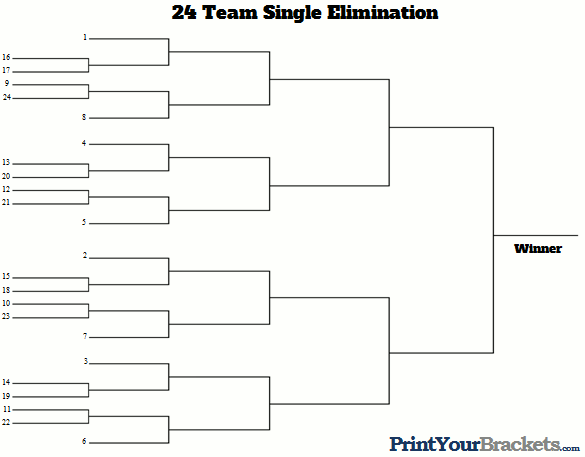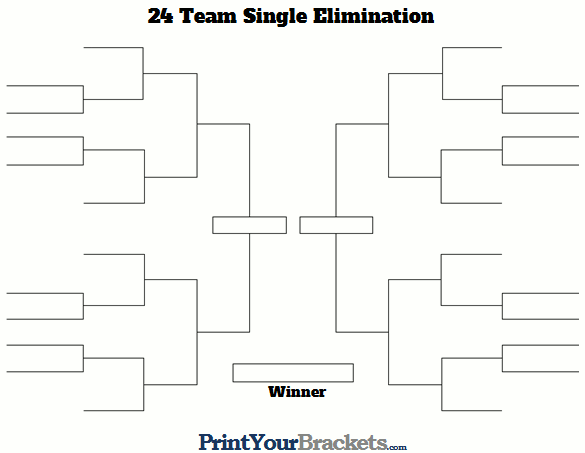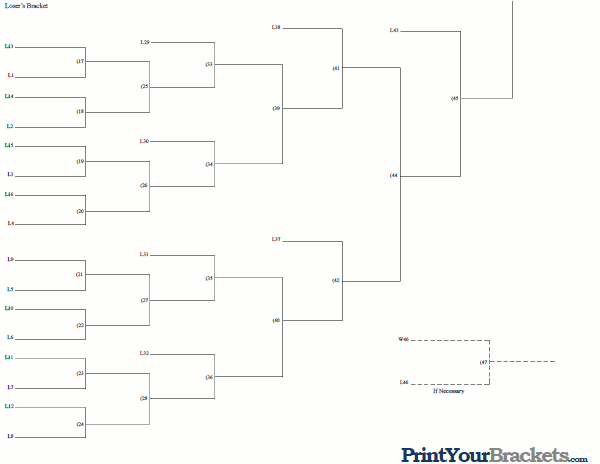Why I Had to Build a 24-Man Bracket Myself (And How I Nailed the Seeding)
Man, sometimes you just get stuck doing jobs nobody else wants. My boy was running this charity video game smash tournament, right? Not some massive corporate gig, just local kids in the community hall. Everything was fine until the registration closed. Twenty-four teams. Not 16. Not 32. Twenty-four. I immediately knew we were going to be dealing with a mess because that number just doesn’t fit cleanly into anything.

I told him, “Look, 24 is garbage. We need 32 slots to run a clean single-elimination bracket.” He just stared at me like I spoke Martian. I spent maybe an hour trying to find some free online bracket generator that actually looked decent and didn’t demand I sign up for five newsletters. Everything I found either looked like it was designed in 1998 or immediately crashed when I punched in “24.”
So, I scrapped the software idea. I decided I was going to build the damn thing manually. I grabbed a massive whiteboard and started sketching. This whole process, from the blank board to the final, neatly seeded structure, became my weekend project, and honestly, it taught me more about basic tournament structure than any fancy program ever could.
Breaking Down the Bracket Math: Finding the Byes
First thing you gotta realize with 24 competitors is that you are building a 32-slot bracket. You have to. If you don’t, your later rounds get completely lopsided. That means you are looking for byes. The number is simple:
- Total needed slots (Power of 2): 32
- Teams you actually have: 24
- 32 minus 24 means you need 8 Byes.
This is where most beginners mess up. They just stick the 8 teams with byes anywhere. But the whole point of seeding is that the best teams—the ones that paid attention to the deadline and actually registered early, or the ones who showed skill in the qualifiers—should get the advantage of skipping the first round and waiting for the dust to settle.
So, those 8 byes are reserved for your top 8 seeded teams. Period. Those teams jump straight to the Round of 16.

The Real Trick: Simple Seeding for the Top Dogs
I started drawing the 32 slots. I didn’t even write the names in yet, just the seed numbers. When you seed a bracket, your goal is to make sure your top seeds cannot meet until the final round or the semi-final round, depending on how many rounds you have.
For a 24-man bracket (which is really a 32-man bracket with 8 byes), this is how I started placing the top four teams. It’s the standard, simple way, and it works every time:
Step 1: Placing Seed 1 and Seed 2.
Seed 1 goes on the very top line. Seed 2 goes on the very bottom line. They are now guaranteed not to meet unless they both reach the final. They both receive a Bye.

Step 2: Placing Seed 3 and Seed 4.
This is where you split the bracket into quadrants. Seed 3 goes at the top of the bottom half (just below the midline). Seed 4 goes at the bottom of the top half (just above the midline). Again, they both get Byes. This guarantees that Seed 1 won’t see Seed 4 until the semi-final, and Seed 2 won’t see Seed 3 until the semi-final. It protects the integrity of the whole structure.
Step 3: Finishing the Top 8 Byes.
I placed seeds 5, 6, 7, and 8 in the remaining open Bye slots, distributing them evenly. You want to pair the lowest remaining seed against the highest remaining seed in that grouping. It’s always about balance. Since we have 8 byes, 5, 6, 7, and 8 filled those last spots. This way, the top 8 teams don’t even have to lift a finger until Round 2.

Step 4: Filling the Rest (Seeds 9 through 24).
The remaining 16 teams (9 through 24) must now play the actual first round games. They are matched against the open spots that the Byes left behind. So, Seed 9 plays the lowest available opponent, and so on. You pair them up high-low across the remaining 16 spots, matching Seed 9 vs. Seed 24, Seed 10 vs. Seed 23, etc. These 8 games happen, and their winners proceed to meet the seeded teams in the Round of 16.
Why Manual Work Always Wins
I know this sounds like a lot of work compared to clicking a button, but building it this way on the board let us explain the structure clearly to every participant. Nobody could complain about a “random draw” because the seeding logic was right there, plain as day.
It reminds me a lot of when I was working that brutal overnight shift years ago. I was supposed to be managing logistics using this massive, bespoke, proprietary system that was supposed to automate everything. It was designed by some genius who made the interface so complex that every time we tried to move a pallet, the system choked. We wasted hours just trying to navigate drop-down menus.
Eventually, the older guys just threw out the computers for the critical tasks. We reverted to paper and colored markers. We mapped out the entire warehouse flow by hand on huge schematic charts. It was faster, clearer, and when something broke, you could immediately point to the marker line and know where the breakdown happened. That manual clarity cut our error rate in half almost instantly.
The 24-man bracket was the same deal. Keep it simple. Understand the structure. If you have 24 teams, know you need 8 byes, give them to your best teams, and make sure 1 and 2 are as far apart as possible. Done. Next time you run into an awkward number, ditch the fancy software and grab a pencil.
